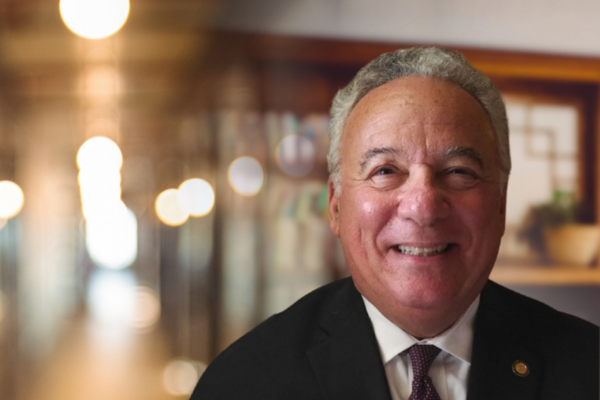Have you ever wished you had some way of preserving and organizing every document of interest? Correspondence, personal papers, newspaper or magazine articles, legal notices, invoices, warranties…the list goes on and on.
Of course, the downside of storing paper files for decades is that it’s expensive and cumbersome. And, when you want to find a particular document, it can be difficult and time-consuming, especially if you haven’t seen it in years. Maybe it’s a letter. Or a legal file. Or an article. Even if you could remember where the file is, you’d still have to find the box containing it, and then rummage through the files in that box to find the document you’re looking for.
This was the conundrum faced by Steven Ludsin.

Ludsin, a graduate of Cornell, with a degree in Industrial and Labor Relations and a minor in Art History, is an attorney specializing in bankruptcy law analysis. He has a wide range of interests that extend far beyond the arts or the law. In particular, he is the child of Holocaust survivors originally from Latvia. His deep interest in the Holocaust led him to help establish the U.S. Holocaust Museum in Washington, D.C. He’s the only child of a Holocaust survivor to serve on both the President's Commission on the Holocaust and was a charter member of the U.S. Holocaust Memorial Council.
As a result of his many activities, such as his legal practice, his art, his correspondence with people all around the world, and the articles he’s written for various publications, he’s accumulated thousands of documents over the years.
Rather than allowing himself to be overwhelmed by these files, he came up with what he calls the Ludsin Method, which enables him to quickly and easily capture any document of interest, store it in a secure cloud-based archive, and then retrieve it whenever he wants within seconds by simply typing in a few keywords, even if the file is decades old.
What does he do? He scans them.
And by them, we mean everything: bills, financial statements, correspondence, tax records, even parking tickets. One could say his entire life is now digitized.
By digitizing and organizing his files, he immediately relieves himself of the burden of managing thousands of paper documents. And by organizing those scanned files into a system, he now has a method for rapidly cataloging and retrieving records, even if it’s been years since he first created the file.
As Ludsin proudly points out, “It’s all there.”
- If he has a dispute with a contractor, he’s got all the evidence at his fingertips to document his case.
- When the town he lives in tried to increase the taxes on his house, he was able to prove, using more than 10 appraisals of neighboring houses, that the increased taxes the town was proposing were incorrect and was able to get the decision reversed. In fact, the town appraiser was so convinced by Ludsin’s evidence that he remarked, “You’re a genius.” But Ludsin’s point was that all he did was collect and organize the documents refuting the town’s claim.
- When Ludsin bought a new hot water heater, he scanned everything about the purchase, including the invoice and warranty into his system. 10 years later the heater failed. Rather than simply eat the cost of repairs, he was able to prove that it was still covered by the warranty, and the manufacturer was required to reimburse him, all because he had all the original documentation.
- When he was involved in a car accident that was someone else’s fault, he had all the documentation, including pictures, to support his insurance claim.
- When he purchased a new laptop, he digitized all the documentation, down to the serial number, in the event that something goes wrong with it in the future.
Ludsin is also a big believer in EverNote. In fact, “I have over 100,000 notes in EverNote”, but he can find any note he wants because he uses his system to scan and store all his notes.
This approach to managing life digitally has become even more relevant in the post-Covid world where more people are now working from home. Using it, you can quickly and easily organize all the paperwork associated with your activities to improve efficiency and reduce costs.
What’s the Setup?
Ludsin’s method is simplicity itself. The heart of the system is a ScanSnap iX1600 scanner. The scanned files are automatically fed into PaperPort document management software from Kofax, which Ludsin uses to organize into a hierarchical system of electronic folders stored in the cloud.
Once the files are in PaperPort, he can then quickly and easily locate them by either examining the folder contents or typing in a few keywords to locate them.
He also had the foresight to choose a vendor who helped him with service and support. By selecting ScanSnap as his scanner vendor, Ludsin had access to local tech support that helped him install and configure the scanner, enabling him to get up and running quickly and easily.
If you’re finding yourself overwhelmed by all the documents and papers in your life, you owe it to yourself to consider the Ludsin Method!

